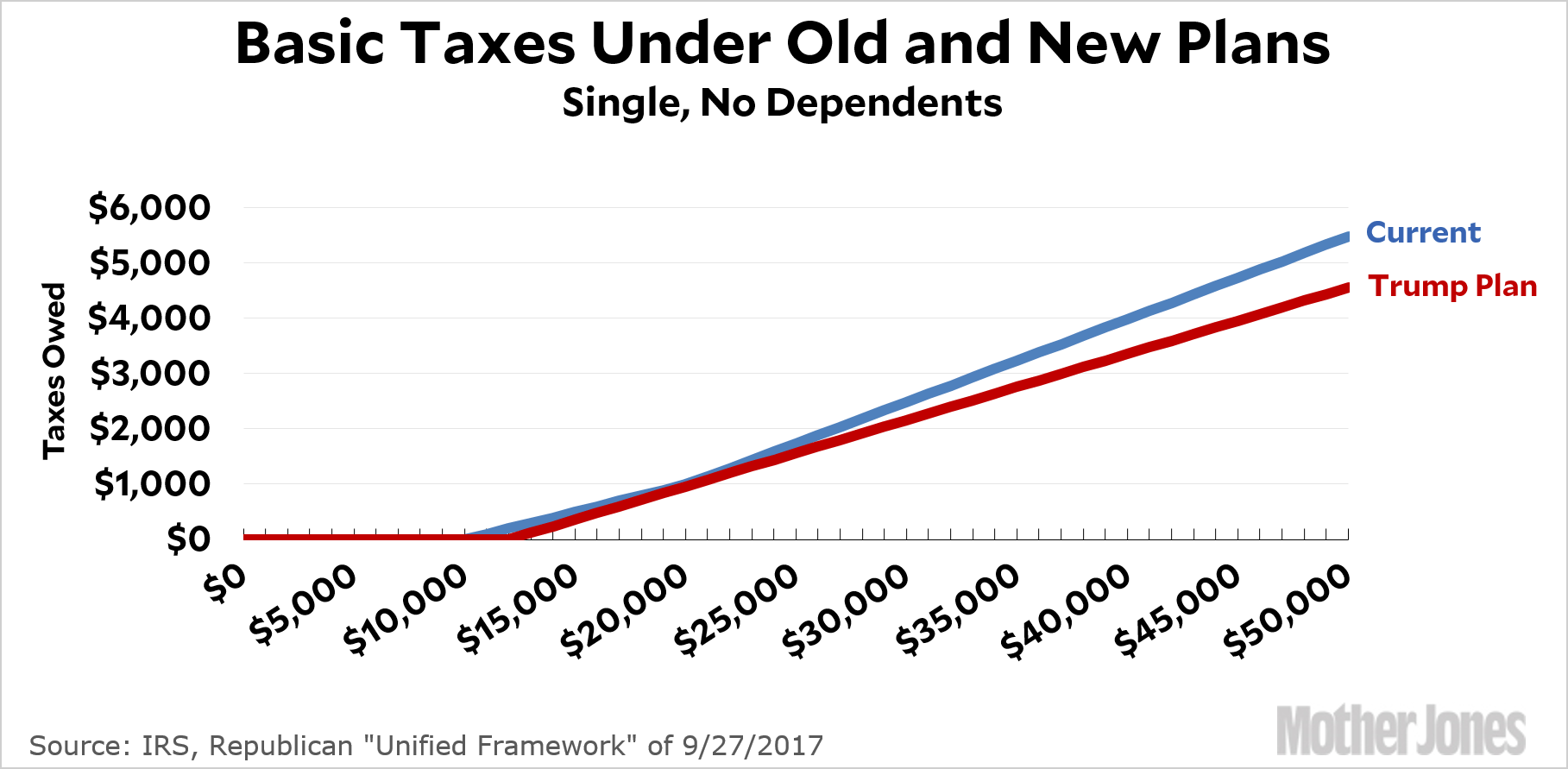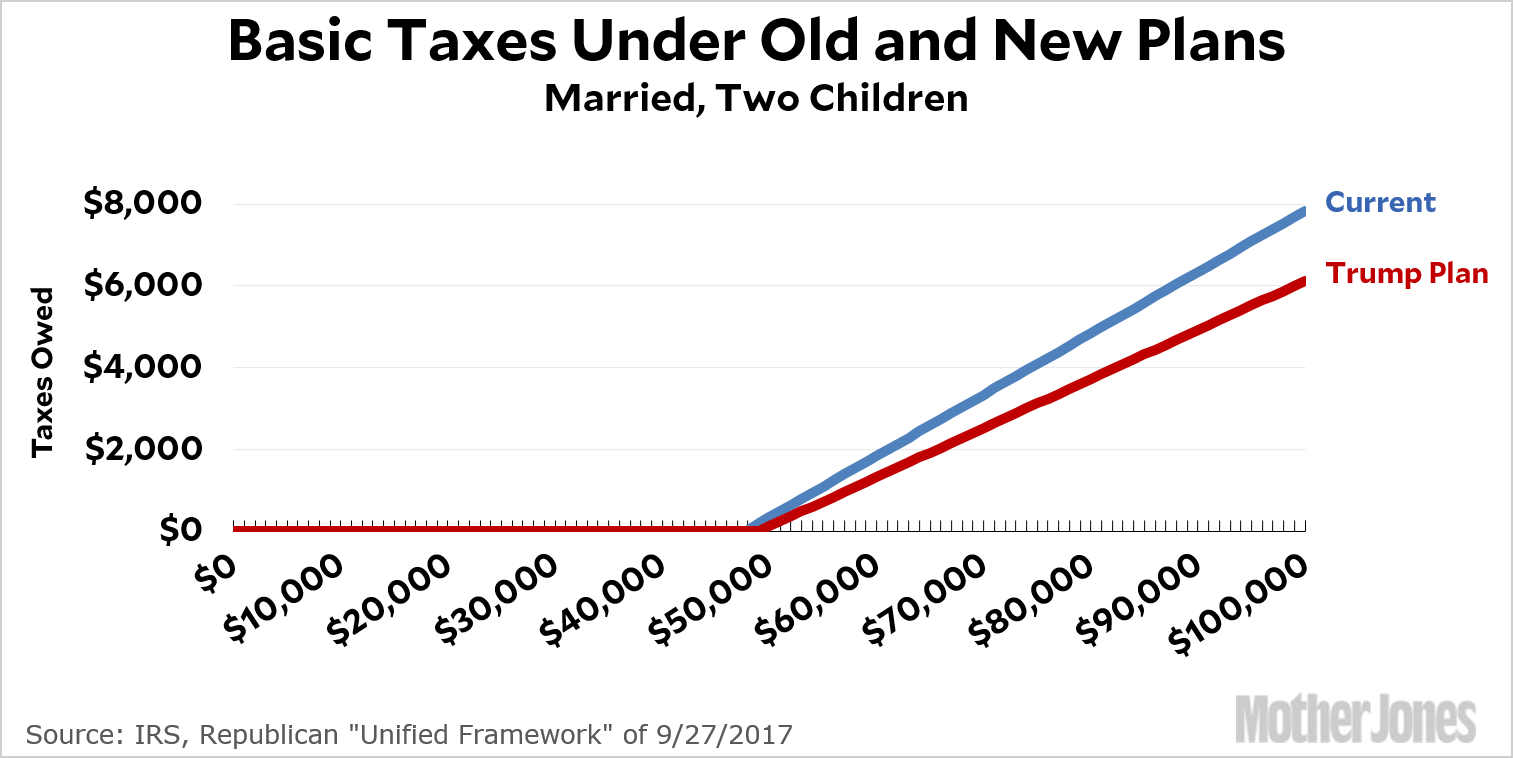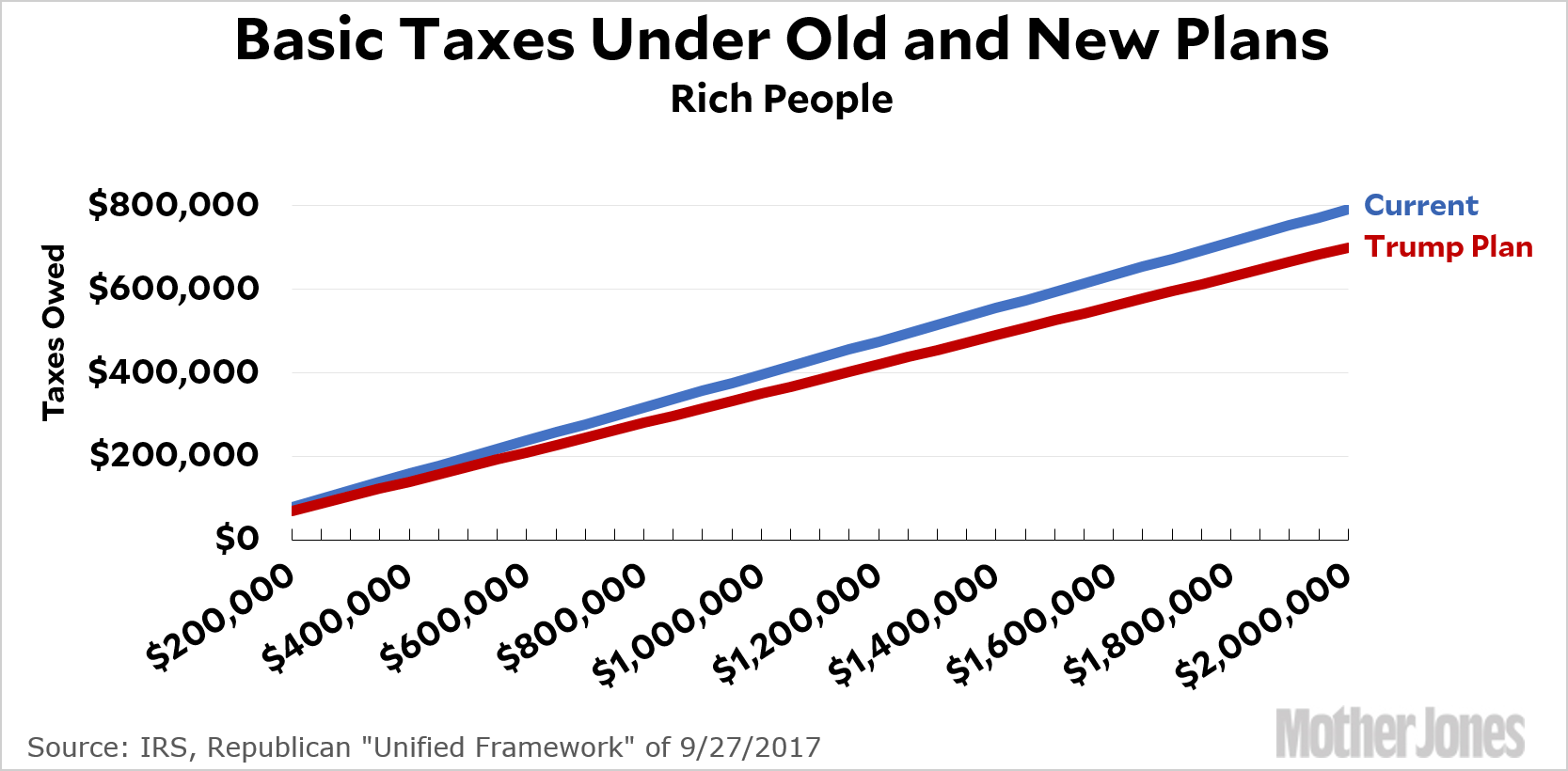UPDATE: I got this completely wrong in the initial post. Basic taxes are lower for everyone under the Republican “unified framework,” including the working and middle classes. I’ve corrected the charts using the proper tax brackets.
Here in Cork, it’s raining and the wind is howling. Neither one of us feels like roaming around town in this mess, so we’re staying in.
So let’s talk taxes. Noah Lanard described the Trump tax plan in this space earlier today, but you know me: I want a chart. First, let’s review what the plan does for low and middle-income folks:
- Increases the bottom tax rate from 10 percent to 12 percent.
- Increases the standard deduction from $6,000 to $12,000 (twice that for couples).
- Eliminates the personal exemption of $4,050 for each person in a household.
For example, for a single person making $50,000 under the current structure, your taxable income is $50,000 – $6,000 – $4,050 = $39,950. You pay 10 percent of the first $10,000, 15 percent of the next $28,000, etc. It adds up to about $5,500.
Under the Trump plan, your taxable income is $50,000 – $12,000 = $38,000. You pay 12 percent of that, or $4,560. That’s less than you pay now. Here it is in chart form:

Things look a little different for a family. The standard deduction is doubled, but you lose more personal exemptions. You also have to account for the child tax credit, which Trump promises to “significantly” increase. He doesn’t provide a number, so I’m assuming an increase from $1,000 per child to $1,500.
His plan also doesn’t say where his 25 percent tax bracket kicks in, so I’m assuming it starts at the same place as it does under current law, which means it doesn’t come into play under $100,000. Here’s the chart:

But what about the rich? I figured you’d ask. As you can imagine, piddling little things like standard deductions and personal exemptions don’t matter to folks who make lots of money. It’s just noise. What matters is the rate: the Trump plan cuts the rate on high earners from 39.6 percent to 35 percent. This means that someone making $2 million per year saves nearly $100,000. Here it is chart form:

The super-duper rich would also save money from the proposed elimination of the Alternative Minimum Tax and the estate tax.
Bottom line: basic taxes go down for everyone. The working and middle classes might save anywhere from $500 to $2,000 or so. The rich will save anywhere from zero to infinity, depending.
CAVEAT: This is just basic taxes. For the working poor and the working class, it doesn’t include things like the EITC or the mortgage interest deduction. For the rich, it doesn’t include the million-and-one things they can do to reduce their tax bill substantially. Trump promises to address this by eliminating lots of low-value deductions and repealing “numerous” other exemptions, deductions and credits. But he doesn’t say which ones, and we all know how that goes.
So this shows just the basic rate structure. In practice, it will almost certainly play out a little differently. And once Congress gets done, it might not even look anything like Trump’s plan anyway.

















